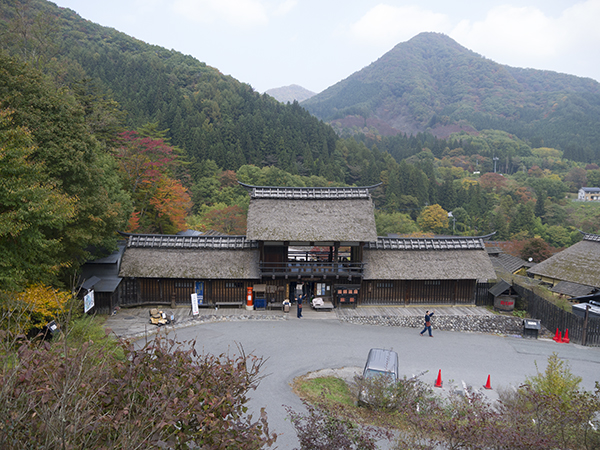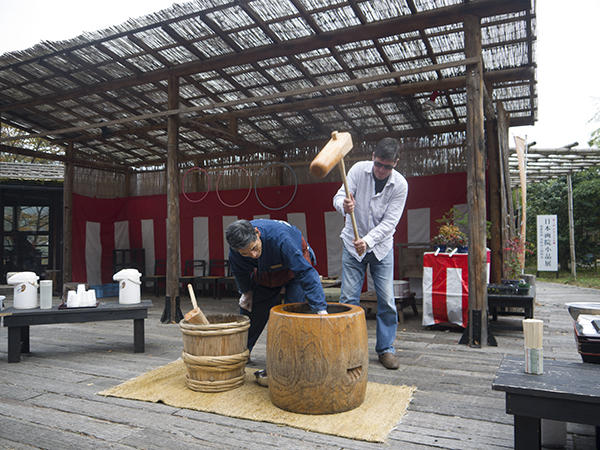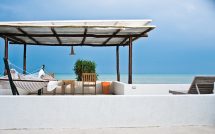
Just a few hours by train from Tokyo lays the stunning prefecture of Gunma, a haven for those seeking the healing powers of traditional hot springs or simply wanting to experience authentic Japanese cuisine from the Edo period. In the summertime, Gunma is perfect for trekking and picnics, while in the autumn months entire valleys explode in a kaleidoscope of colours as millions of trees prepare for the onset of cold weather. As the winter snows arrive, this mountainous region is turned into a winter wonderland, a splendid vision indeed, which makes Gunma a year-round destination.
Gunma prefecture is colloquially referred to as ‘hot spring country’ and boasts some of the best onsen facilities in all of Japan. Located in the remotest part of the Asama-Kakushi Onsen Area is Yakushi Onsen Hatago, a mountainside ryokan (Japanese inn). The ryokan offers the atmosphere of a secret onsen that could have once been owned by a feudal Shogun. Surrounded by rich nature, guests today truly appreciate the seasonal colours, streaming waterfalls, and abundant wildlife, not to mention the delicious cuisine, sake, and other enjoyable treats.
The ryokan’s roots can be traced back to the late-18th century, when a monk stumbled across the remote hot spring inn whilst making his spiritual journey across the country. Its trademark hospitality was the same back then as it is now, offering guests a clean, warm environment, personal attention, and simple fresh cuisine. So idyllic is the location that it’s easy to imagine the monk made a return journey along the same route.
As soon as you enter the draw-dropping main gate at Yakushi Onsen Hatago, you are immediately drawn to a bygone era and almost expect to see a Samurai warrior walk around the next corner. This particular ryokan also doubles as a working museum and provides guests and visitors a marvellous window on Japanese life of yesteryear with thousands of ancient antiques and folk crafts showcased in traditional Japanese buildings.
The stunning accommodation combines a newly refurbished building that fits snugly against the northern bank of Nuru River, providing all rooms with a picturesque view over the tributary. The rooms are spotlessly clean and feature numerous creature comforts that make any stay trouble-free. These included a large LCD television, a fridge, Wi-Fi, complimentary music system, and daily Japanese snacks. As with most ryokan accommodation, the ubiquitous tatami mat sleeping area is separated from the main living area.
All guest rooms at Yakushi Onsen Hatago are outfitted with age-old furniture and decorated with antiques from as far back as the Edo period. Many of these antiquities are displayed in their natural working environment, which only adds to the historical feel of the place. There are mod cons too, but the real surprise is to actually use furniture that was once owned by Japanese noblemen and women.
It is said that the hot springs at Yakushi Onsen Hatago were first discovered by pilgrims during the Edo period. The water comes from a deep vein that has naturally formed in the crust of the earth, providing consistent heat through geothermal activity. A live video feed at the entrance to the public baths takes you to the source of the hot water as it seeps out of the earth at 42.8 degrees Celsius. The onsen offers private and public baths, as well as an ashiyu(foot bath).
Takimino-yuis a rotenburo(outside onsen) and it is a favourite onsen for nature lovers. What draws people here is that it offers spectacular views over the facing valley and a waterfall located nearby. In autumn, the trees erupt in a riot of colour, while in winter snowflakes gently float down before melting as they hit the hot water. A 20-minute hot soak night or day is sure to be a particularly memorable experience.
The amazing cuisine at Yakushi Onsen Hatago is made from high-grade seasonal produce that is locally sourced and allows the chefs to create a wide range of traditional Japanese dishes. The house specialty cuisine is irori-kaiseki, which guests can enjoy in the ancient ambience of a Kayabuki house, one of several restaurants at the hotel.
A dining highlight here is the 15-course irori-kaisekiin which every dish is prepared and cooked by a talented chef on a traditional Japanese-style fireplace set in the middle of the floor. Long ago it was common for Japanese houses to have a central fireplace that would be used for heating and cooking purposes. These days, however, such fireplaces are becoming harder to find. Kayabuki no Sato Yakushi Onsen Hatago offers a menu based exclusively on such traditional cooking techniques, allowing visitors to experience irori (open fireplace) dishes prepared in the style of days gone by.

Of the fourteen buildings that make up Yakushi Onsen Hatago, two are worth particular mention. Honjin is the central nervous system of the entire hotel and is where guests and visitors are welcomed. Acting as a lounge and front desk, it boasts an impressive thatched-roof and large floor-to-ceiling windows that let in plenty of natural light. Inside is a large irori, which creates a homely atmosphere. Outside, you’ll find the Shofuku Shichiren Syoudouwhere seven bells hang beneath a wood-woven roof opposite the medicinal onsen. Visitors are encouraged to ring the bells in order to be granted a wish: many no doubt wishing for a swift return to this idyllic spot, just as the wandering monk did many years ago.


